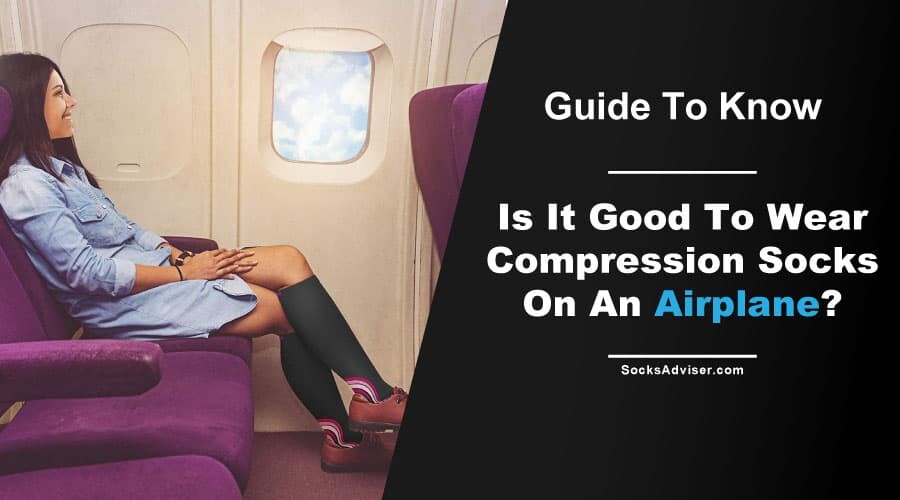Did you know that approximately 2 to 5 in every 10000 travelers who take a long-haul flight that lasts over 6–8 hours are at risk of developing deep vein thrombosis (DVT)? Well, the risk might appear marginal, but if you can do something as simple as wearing compression socks. In this article, you will also understand why you should wear compression socks when flying. Let’s take a look.

Is it good to wear compression socks on an Airplane?
Yes! It’s a good idea to have your compression socks on, especially on a long-haul flight. This is because compression sock helps prevent blood circulation problems, reducing the risk of DVT.
One of the main contributing factors of DVT is sitting or being immobile for an extended period, which is the case when you are on a long airplane flight. To avoid this from happening, you need to wear tight-fitting compression socks that apply gentle pressure on your legs and ankles. This will help improve blood flow in your veins, hence preventing your blood from pooling and clotting.
Do compression socks work on an Airplane?
Some of the blessings of wearing compression socks when in a flight that lasts over 5 hours is that it helps reduce leg discomfort and swelling and prevents blood clots. Studies show that compression socks are safe for use and have a minimal risk of harm.
More, compression socks is that it helps you walk around easily, as it aids in minimizing lactic acid, increasing blood flow, preventing cramps, and minimizing muscle fatigue. It also enhances oxygen delivery.
When to put on Compression Socks for Flying?
The institute for quality and efficiency in health care recommends that you wear your compression socks at least two hours before your flight. After that, you should wear compression socks the entire time you are on the plane. According to the study, wearing compression socks as instructed above will significantly reduce the probability of developing DVT.
Compression Socks While Flying: Side Effectes and Solutions
Although compression socks are safe, there is a slight possibility of having some side effects. Some of the potential side effects include; bruises and broken skin, burning or chafing, itching, and loss of circulation.
- To avoid these side effects, consider doing the following:
- Choosing socks with the correct compression (not too tight).
- Stretching and walking around during your flight.
- Remove your socks and flex your ankles regularly, say after every 30 mins.
- Drinking a lot of water.
Parting shot
A compression sock is the easiest way to prevent deep vein thrombosis in long flights. In addition, it will make your travel feel more comfortable. For individuals with a history of venous insufficiency or blood clots, compression socks will improve your blood flow and make you feel more relaxed.
